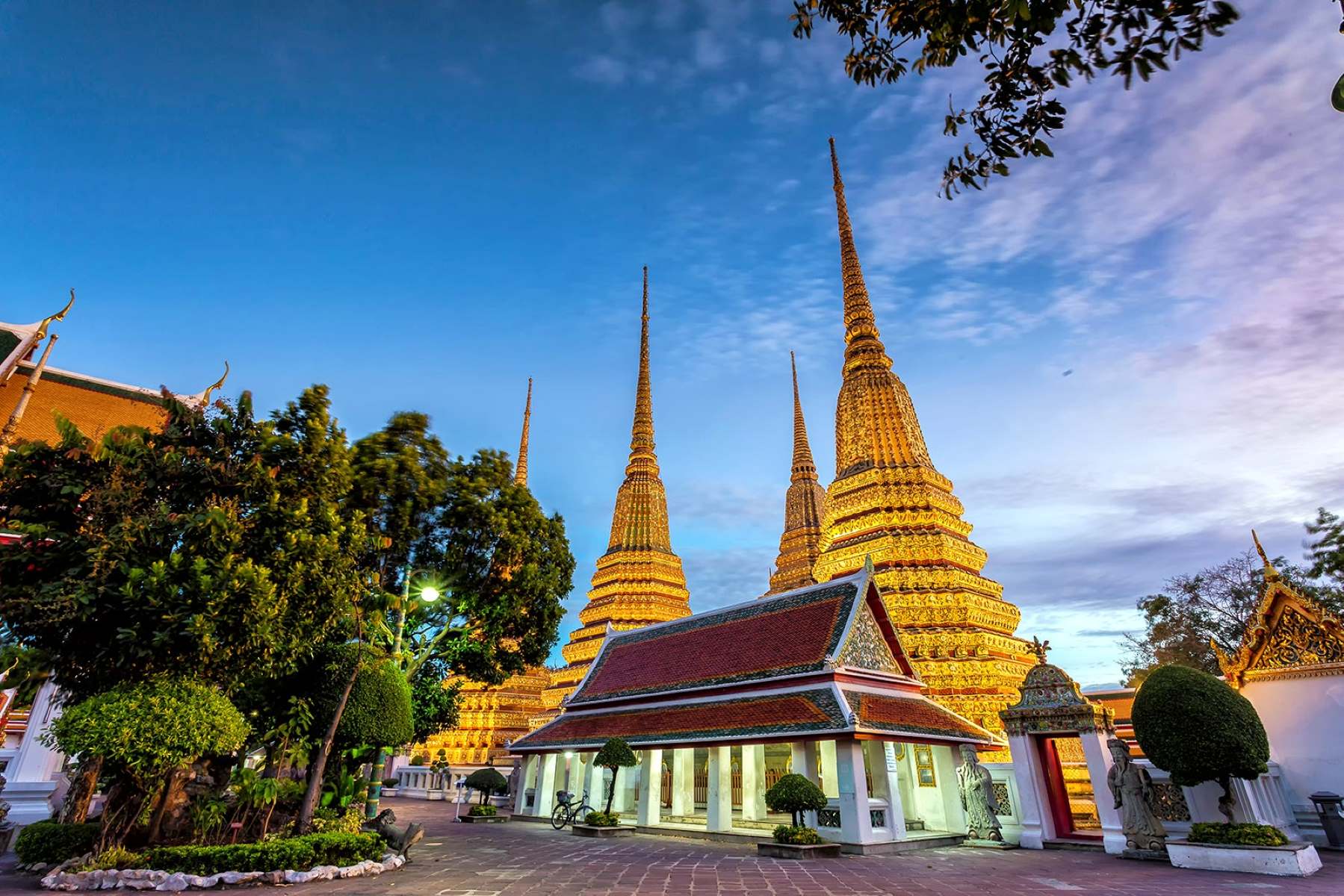
When it comes to iconic landmarks in Thailand, Wat Pho certainly stands out as one of the most enigmatic and awe-inspiring. Located in the heart of Bangkok, this renowned Buddhist temple is not only a significant religious site but also a treasure trove of historical and cultural wonders. With its sprawling complex and exquisite architecture, Wat Pho attracts millions of visitors from around the world each year.
In this article, we will delve into the depths of Wat Pho and uncover some fascinating facts that make this temple truly remarkable. From its colossal Reclining Buddha statue to its magnificent collection of ancient inscriptions and traditional Thai massage school, Wat Pho is a captivating blend of spirituality, artistry, and knowledge. Whether you’re planning to visit the temple or simply looking to expand your knowledge, these eleven enigmatic facts about Wat Pho will leave you mesmerized.
Key Takeaways:
- Wat Pho is a massive temple complex with a giant Reclining Buddha, ancient Thai massage school, and over 1,000 Buddha statues. It’s a peaceful oasis in bustling Bangkok, perfect for history and art lovers.
- The temple is a hub of history, art, and education, featuring royal connections, Chinese ceramics, exquisite murals, and a vast library. It’s a serene escape from the city’s chaos, offering a glimpse into Thailand’s rich cultural heritage.
The Reclining Buddha is one of the largest in the world
One of the highlights of Wat Pho is the impressive Reclining Buddha statue, measuring a staggering 46 meters long and covered in gold leaf. It is not only a revered religious symbol but also a remarkable work of art.
Home to the oldest Thai massage school
Within the temple grounds, you can find the first official Thai massage school in the country. It offers a comprehensive program where students learn the traditional techniques passed down through generations.
The temple served as a royal burial site
Wat Pho has served as the burial ground for numerous royal family members, including several Thai kings. The temple’s historical significance is further enhanced by these regal connections.
The temple complex covers a vast area
Spanning over 80,000 square meters, Wat Pho is one of the largest temple complexes in Thailand. It consists of various intricately designed buildings, gardens, and courtyards that exude tranquility and grandeur.
Over a thousand Buddha images can be found within Wat Pho
Visitors to the temple will be amazed by the sheer number of Buddha statues adorning the premises. With over 1,000 images collected from different parts of the country, it is a treasure trove for art enthusiasts and spiritual seekers.
Wat Pho is considered the birthplace of traditional Thai massage
The ancient art of Thai massage originated at Wat Pho, where it was taught and practiced by monks. Today, the temple’s massage school continues to be a revered institution for those seeking to learn or experience this therapeutic practice.
Home to one of the largest collections of Chinese ceramics
Wat Pho is not only renowned for its religious significance but also for its extensive collection of Chinese ceramics. These intricate pieces offer a glimpse into the historical trade and cultural exchanges between China and Thailand.
The temple is a center for learning and education
Beyond its religious and cultural significance, Wat Pho has long been regarded as a place of learning. Historically, the temple housed one of the first public education institutes in Thailand, attracting scholars and intellectuals.
The temple walls showcase exquisite murals
Exploring the temple grounds, visitors are treated to breathtaking murals that depict various aspects of Thai history, mythology, and Buddhist teachings. These intricate artworks are testaments to the rich artistic heritage of Thailand.
A heaven for bibliophiles
Wat Pho houses a vast library containing a vast collection of ancient texts, including palm-leaf manuscripts and historical documents. The library is a haven for scholars and historians seeking to delve into Thailand’s rich literary traditions.
Wat Pho offers a peaceful escape from the bustling city
Amidst the chaotic energy of Bangkok, Wat Pho stands as an oasis of tranquility. Its serene courtyards, lush gardens, and calming ambience provide a sanctuary for visitors seeking solace and spiritual reflection.
These 11 enigmatic facts about Wat Pho only scratch the surface of the wonders that await those who venture to this revered temple. It truly is a must-visit destination for anyone seeking to immerse themselves in Thailand’s rich cultural and spiritual heritage.
Conclusion
In conclusion, Wat Pho is an extraordinary landmark that continues to captivate visitors from around the world. With its remarkable history, stunning architecture, and unique cultural significance, it is no wonder that Wat Pho is considered one of the most enigmatic landmarks in the world. From the giant reclining Buddha to the traditional Thai massage school, there is so much to discover and experience within the walls of this ancient temple complex. Whether you are a history enthusiast, a spiritual seeker, or simply someone who appreciates beauty and tranquility, Wat Pho is a must-visit destination that will leave you in awe. So, plan your trip, explore the hidden wonders of Wat Pho, and let yourself be immersed in the rich heritage and mysterious allure of this remarkable landmark.
FAQs
1. What is the significance of Wat Pho?
Wat Pho is considered one of the most significant landmarks in Thailand due to its historical and cultural importance. It is home to the impressive Reclining Buddha statue and is the birthplace of traditional Thai massage.
2. How old is Wat Pho?
Wat Pho was built back in the 16th century, during the Ayutthaya period. It has undergone several renovations and additions over the years, but its core structure has remained intact.
3. Can I visit Wat Pho at any time?
Wat Pho is open to visitors every day from 8:00 am to 6:30 pm. However, it is advisable to visit early in the morning to avoid the crowds and to fully enjoy the serene atmosphere of the temple grounds.
4. Is there an entrance fee for Wat Pho?
Yes, there is an entrance fee to enter Wat Pho. The fee is 100 Thai Baht per person, which includes access to the entire temple complex.
5. Can I take photographs inside Wat Pho?
Yes, photography is allowed inside Wat Pho. However, it is important to be respectful of the sacred space and to avoid using flash photography near the Buddha statues.
6. Can I receive a Thai massage at Wat Pho?
Yes, Wat Pho is famous for its traditional Thai massage. There is a massage school within the temple complex where visitors can receive a rejuvenating and authentic Thai massage.
7. Are there any dress code requirements to enter Wat Pho?
As Wat Pho is a sacred site, visitors are required to dress modestly. Avoid wearing revealing or inappropriate clothing. It is advisable to cover your shoulders, knees, and avoid wearing shorts.
8. Is Wat Pho accessible for wheelchair users?
While there may be some accessibility challenges in certain areas of the temple complex, overall, Wat Pho is relatively accessible for wheelchair users. There are ramps and pathways to facilitate easy movement.
9. Can I bring food or drinks inside Wat Pho?
No, outside food and drinks are not allowed inside the temple complex. There are designated areas where you can enjoy a meal or refreshments outside the premises.
10. What other attractions are near Wat Pho?
Wat Pho is located near several other popular landmarks such as the Grand Palace, Wat Arun, and the Flower Market. These attractions are within walking distance and can be easily explored on the same day.
11. Are there guided tours available at Wat Pho?
Yes, guided tours are available at Wat Pho for those who want a more in-depth understanding of the temple’s history and significance. These tours can provide valuable insights and make your visit even more rewarding.
Wat Pho's enigmatic allure beckons travelers seeking solace and enlightenment. Beyond its walls, other marvels await discovery, like Borobudur's ancient Buddhist temples that whisper tales of devotion and artistry. For those craving immersion in living traditions, cultural heritage thrives at events like Mountain Heritage Festival, where communities gather to celebrate their roots and share their stories with the world.
Was this page helpful?
Our commitment to delivering trustworthy and engaging content is at the heart of what we do. Each fact on our site is contributed by real users like you, bringing a wealth of diverse insights and information. To ensure the highest standards of accuracy and reliability, our dedicated editors meticulously review each submission. This process guarantees that the facts we share are not only fascinating but also credible. Trust in our commitment to quality and authenticity as you explore and learn with us.


